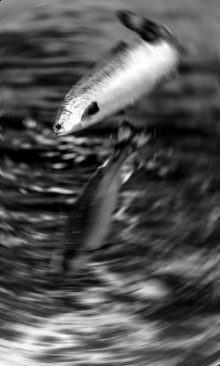Salmon study shows climate preferences
 Scientists have attached sensors to salmon to reveal how farmed fish are likely to respond to climate change.
Scientists have attached sensors to salmon to reveal how farmed fish are likely to respond to climate change.
Tasmania’s Institute for Marine and Antarctic Studies (IMAS) has found that during the hottest summer on record, salmon in aquaculture cages in Tasmania’s Macquarie Harbour tended to concentrate in the middle depths to avoid low levels of oxygen at the bottom of their cages and warm surface waters at the top.
The research, published in the journal Scientific Reports, showed that the vertical contraction of fish habitat is likely to be a significant response to warming from climate change.
“Atlantic Salmon, both farmed and wild-caught, are a globally important commercial species,” lead author Dr Killian Stehfest said.
“It is crucial that we determine how they will respond to extremes of dissolved oxygen and ocean temperatures as the climate warms.
“While other studies have been done in laboratories or used equipment that shows how caged salmon behave as a group, our research is novel in that we used new acoustic telemetry tags to measure oxygen levels and temperature in real time in the immediate environment of the fish in on-farm conditions.
“This is the first time sensors have been used in this way, paving the way for similar uses in other species and situations to track how individual fish respond to different environmental conditions.
“Our study showed that salmon actively avoided low dissolved oxygen (DO) levels near the bottom of their cages and the warm waters at the surface.
“This behaviour peaked during the summer months as dissolved oxygen levels fell near the bottom and surface temperatures rose, leading to considerable contraction in the vertical habitat available to the fish.”
At the height of summer the salmon concentrated in the mid layer of their cages at depths of four to six metres, meaning only around two metres of their 17-metres deep cages was available to them.
“However, despite their avoidance behaviour, the fish still spent a large amount of time in waters with DO levels that would be deemed sub-optimal based on studies from other stocks, suggesting that the tolerance to such conditions of the Tasmanian Atlantic Salmon population might be higher than that reported for other stocks,” Dr Stehfest said.
“These results highlight that local environmental conditions and the tolerance of fish to them need to be considered when determining the stocking densities at a given aquaculture site.”








 Print
Print